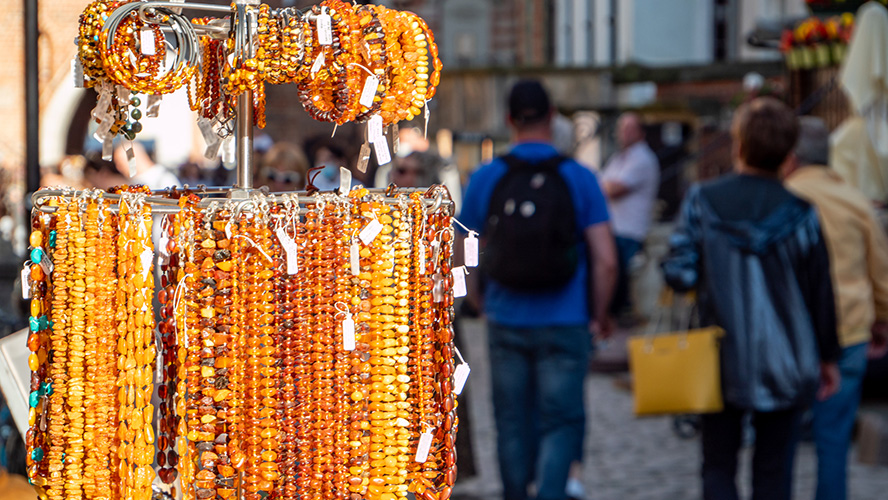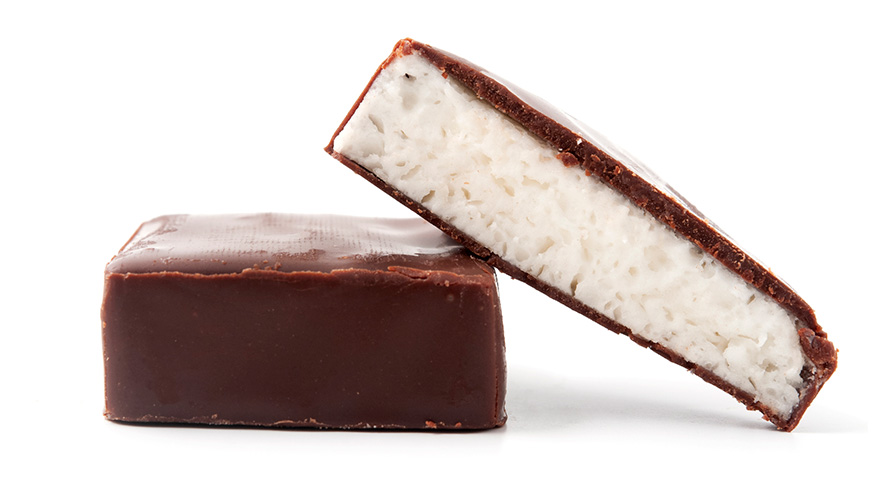Warsaw is a city full of stories and legends, and art on its streets and in its shops, where Baltic pottery and amber are some of the souvenirs that everyone wants to bring back from the Polish capital. It is also a city where you can enjoy eating and drinking. Remember to buy a bottle of good vodka.
Baltic amber
Baltic amber jewellery can be found at almost every store in Warsaw, although the most prized pieces are in the jewellery shop windows. It is a very typical Polish gift and can be found in necklaces, bracelets and earrings, but also in key rings and other gifts decorated with amber stones such as coffee spoons.

Their price rises if insect remains are found in the amber or if the colour is stranger than usual such as ivory white or some shades of green.
In addition, the resin is considered to have healing properties for some illnesses such as thyroid disease; even vodka with traces of amber used to be drunk for colds.
Handicrafts (jewellery and pottery)
Handicrafts in Poland are an ancient and very rich art. One of the city’s oldest professions was the master goldsmiths and silversmiths, so today it is very easy to find authentic jewellery made mainly in silver and using the filigree technique.
Many pieces can be found at street markets, especially the one in Market Square, but also at specialised stores where silver is a common element in jewellery, candles and other pieces.
The famous Easter eggs, or pisankis, whose tradition dates back to the 10th century, from when the oldest eggs have been preserved, as a religious symbol of Easter, stand out. Nevertheless, nowadays they are also seen as a gift of new life and prosperity.
Another of Warsaw’s most typical gifts is pottery. There are three main types of pottery in the country: Boleslawiec, Ćmielów and Włocławek.

Boleslawiec is the oldest pottery since it dates back to the Middle Ages and is the most common. It is characterised by its hand-painted blue and white tones. In fact, although pieces with folk decorations or phrases written in Polish can be seen, the most popular are the crockery or pottery decorated with dots.
Ćmielów pottery dates back to the 18th century and is considered to be aristocratic crockery since it is used in royal houses and even in the Vatican.
The most modern pottery is Włocławek and its pieces can be found at stalls and antique markets.
Spirits and liqueurs
When talking about spirits in Poland, the first thing that comes to mind is vodka, so you should take a bottle with you back home. After all, Warsaw is the only city in the world that has an entire museum dedicated to this drink: the Muzeum Wódki.
There are many varieties of vodka, pure or in herbal and fruit flavours, and packaged in different sizes, so there is no excuse for not buying a bottle.
The most famous is Chopin Potato Vodka. In fact, Chopin Black is the world’s most awarded vodka.
If you go for the herbal variety, the best known is Zubrowka vodka, in which a blade of bison grass from Bialowieza Park can be found in every bottle.
A typical Warsaw liqueur is Nalewka, a kind of spirit infused with fruit, herbs or spices (or almost anything else) that creates a thick liqueur. The most famous is the cherry liqueur.
Food
It is difficult to find a place with as many types of chocolates as Warsaw. You cannot go back home without a box of chocolates. The most famous chocolate lounge in the Polish capital is Wedel, which even has a café with very stately parlours where you can enjoy this rich cocoa drink.
The Ptasie Mleczko chocolate-covered vanilla marshmallows are very popular and can be found in almost any variety: chocolate, strawberry, lemon, orange, etc.

Another typical gastronomic souvenir is oscypek, a smoked cheese made from salted sheep’s milk, which is more typical of the mountainous region but can be bought at any shop in Warsaw.
Cow’s, goat’s or mixed milk varieties can also be found in the markets, although the authentic one is sheep’s milk.
It has a very peculiar taste, and some restaurants serve it as an appetizer with blueberry jam.
Where to stay
One of the best options for staying in Warsaw is the Barceló Warsaw Powiśle hotel, located in the neighbourhood of the same name and very close to the metro station ‘Centrum Nauki Korpernik’.
It is a modern hotel housed in a former power station, which gives it an industrial feel that is typical of the more alternative areas of European capitals.
Its 151 rooms are designed in the same style as the rest of the hotel, with large pipes, control units and industrial elegance throughout.
The gastronomic offer of the Barceló Warsaw Powiśle hotel includes a main restaurant and a lobby bar. There is also a sky bar with an outdoor swimming pool in the summer months on the fifth floor.
The hotel has a gymnasium that is fully equipped with the latest technology plus spacious rooms for events.

























































